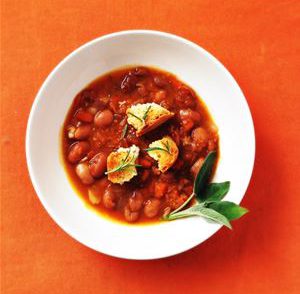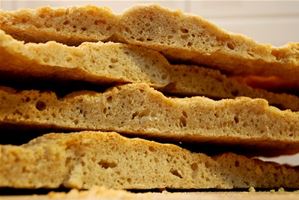One of my favourite things to do at this time of the year is to go to the Sant’Ambrogio market to see what the beginning of spring mushroom season has to offer. My first experience of mushrooming in Italy occurred when I lived in the mountain town of Bormio, in Alta Valtellina, in the region of Lombardy. After having lived in France, I assumed the Italians did as their neighbours. Arriving back in the centre of Paris from a walk in the woods, we would go to our local pharmacy with our mushrooms and the pharmacist, qualified in identifying local poisonous funghi categories, would tell us which varieties we could eat and which would likely kill us.
The French pharmacists were also great at suggesting how to prepare the good ones: which were better sliced thinly and eaten raw as a salad, or best sautéed in butter with garlic and parsley.
We would make our way home happily knowing we would have a feast of funghi and live to tell the tale. So, within weeks of moving to Italy, I walked into the local pharmacy in Bormio and, in my then very limited and heavily accented Italian, asked the pharmacist to check my funghi. I was asked all sorts of questions, most of which I did not understand. When I found myself being ushered outside and down the road and told to ring someone’s doorbell, I assumed the pharmacist who specialised in funghi had another studio.
Not true. I was taken to Dottore Paolo and told to suonare, ring the bell. Okay. When Paolo turned out to be the health inspector who worked for the local ASL, I began to discover the many differences between the French and the Italians—and their laws. Paolo’s first question was to ask whether I was a local resident. It was blindingly obvious that I wasn’t a local: taller than most of the men in the area, and speaking virtually no Italian, in a local village where all 3,147 residents knew everything about one another. He then asked to see my permesso, my permit. I had my permesso di soggiorno (permit of stay) in my passport. No, he wanted to see my permesso per la raccolta dei funghi (permit for mushroom picking) in that particular region in Italy. In the end, I got a stern look, and probably a good telling off, though I didn’t understand most of it. He then confiscated all the good-looking mushrooms from my basket—the ones I would have eaten back home without hesitation—saying villanosi, villanosi, and sent me on my way.
Thankfully Tuscany has better funghi than Lombardy, so I made sure I was well informed when I moved to Florence. The best way to get your hands on wild mushrooms is to have friends give them to you. My other favourite way is to go to Maurizio at the Sant’Ambrogio market and see what he has on offer. It keeps me out of trouble with the local funghi police. But for your own expeditions, consult the article ‘Into the wild’ in TF 172, which gives the rules to keep you out of trouble when on the hunt for wild mushrooms in the region.
Mushroom foraging can be great fun, especially if you are going with locals, but now that I know the laws, going into the bosco, the woods, to find mushrooms is something so many people love to do here. Locals, however, can be secretive about their places for finding their treasure spots and will often go back to the same trees and areas of undergrowth to find a good crop of mushrooms year after year. It is unlikely they will take you with them, however. From the Valdarno to the Chianti, you will see people walking in boots and country attire after the rain, probably on the hunt for wild funghi, which are often found underfoot in the woods, hidden under dry leaves fallen from oak trees.
The funghi prugnoli are proving to be late this year, but I am looking forward to the gallettini, followed by the porcini. My favourite way to eat porcini mushrooms at the beginning of the season is raw, in a large salad, and this is the recipe I offer.
Buon appetito!

RECIPE
Fresh Porcini Salad
Ingredients
As many funghi porcini as you have found, one per person if you are lucky
Parmigiano a scaglie, shavings of Parmesan cheese
Salt and black pepper, quanto basta
Fresh thyme leaves
Fresh parsley
Fresh basil leaves
Extra virgin olive oil
Preparation
Clean the fresh funghi porcini with a damp cloth to remove pine needles and debris. With a small knife cut the dirt off around the bottom in a conical shape so as not to waste any of the stalk.
Slice the funghi thinly all the way through the stalk and the cappello, the head of the mushroom.
Fan out onto plates, sprinkle with the fresh cut herbs, a small handful of parmesan shavings, salt, fresh cracked black pepper and lashings of extra virgin olive oil. Serve a wedge of fresh lemon on the side of each plate to squeeze on the salad at the last minute.
I like to eat this salad as an antipasto and follow with a simple grilled steak. It best to skip the wine with the mushroom course, as most wines can overpower the raw porcini.







